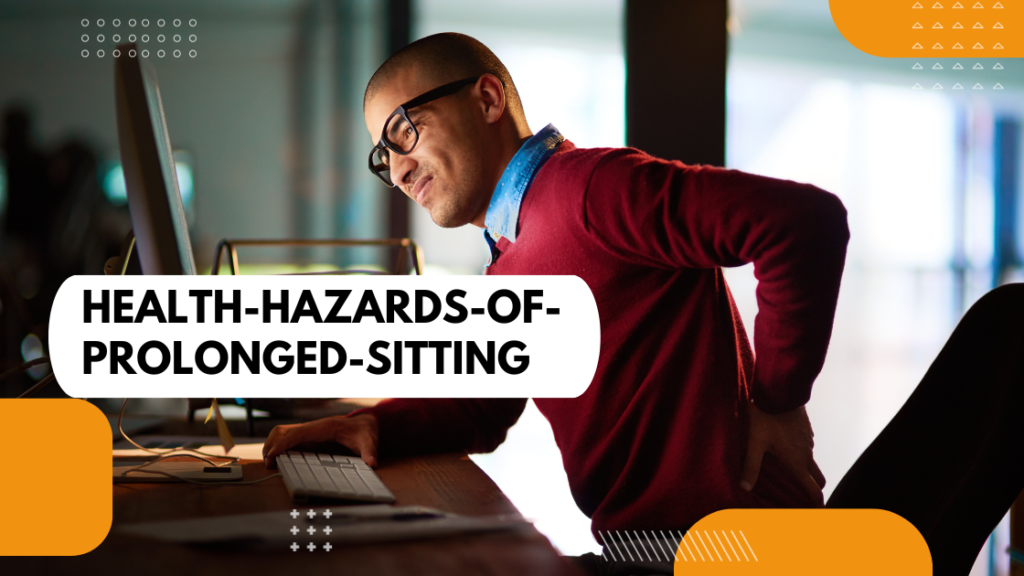In today’s fast-paced world, many of us find ourselves spending Wellhealthorganic.com:Health-Hazards-of-Prolonged-Sitting, whether at work, commuting, or relaxing at home. However, what may seem like harmless comfort can pose significant risks to our health. In this article, we delve into the silent threat lurking behind prolonged sitting, exploring its health hazards, preventative measures, and the importance of staying active. Let’s uncover the vital information you need to safeguard your well-being.
Understanding the Risks
Sitting for extended periods may seem innocuous, but it can have detrimental effects on various aspects of our health. Here’s a closer look at the hazards associated with prolonged sitting:
wellhealthorganic.com:health-hazards-of-prolonged-sitting
Prolonged sitting is linked to a myriad of health hazards, including increased risk of cardiovascular diseases, obesity, diabetes, and even certain types of cancer. When we sit for prolonged periods, our bodies experience metabolic changes that can negatively impact our overall health.
The Impact on Posture and Muscles
Sitting for hours on end can lead to poor posture, muscle stiffness, and reduced flexibility. Over time, this can contribute to chronic back pain, neck strain, and musculoskeletal issues, affecting our mobility and quality of life.
Metabolic Consequences
Sedentary behavior slows down our metabolic rate, leading to weight gain and metabolic disorders. Additionally, prolonged sitting can disrupt blood sugar levels, increasing the risk of insulin resistance and type 2 diabetes.
Cardiovascular Complications
Sitting for prolonged periods can impair blood circulation, leading to increased blood pressure and elevated cholesterol levels. These factors, combined with a sedentary lifestyle, raise the risk of heart disease and stroke.
Mental Health Implications
Sedentary behavior isn’t just harmful to our physical health; it can also take a toll on our mental well-being. Studies have shown a correlation between prolonged sitting and an increased risk of anxiety, depression, and cognitive decline.
Reduced Longevity
Research indicates that excessive sitting is associated with a shorter lifespan, independent of other risk factors. By adopting a sedentary lifestyle, we compromise our longevity and overall healthspan.
Prevention and Mitigation
While the hazards of Wellhealthorganic.com:Health-Hazards-of-Prolonged-Sitting may seem daunting, there are practical steps we can take to mitigate these risks and promote a healthier lifestyle:
Incorporate Regular Movement Breaks
Break up long periods of sitting by incorporating short movement breaks throughout the day. Stand up, stretch, and take a brief walk to get your blood flowing and reduce the strain on your muscles and joints.
Use Ergonomic Furniture
Invest in ergonomic furniture, such as adjustable desks and chairs, to support proper posture and reduce the strain on your body while sitting. Ergonomic equipment can help alleviate discomfort and prevent musculoskeletal issues.
Stay Active Outside of Work
Engage in regular physical activity outside of work hours to counteract the effects of Wellhealthorganic.com:Health-Hazards-of-Prolonged-Sitting. Aim for at least 150 minutes of moderate-intensity exercise per week, incorporating activities like walking, jogging, cycling, or swimming.
Practice Desk Exercises
Perform simple exercises at your desk to keep your muscles engaged and prevent stiffness. Incorporate stretches, chair yoga, or strength-training exercises into your daily routine to promote flexibility and muscle strength.
Opt for Active Transportation
Whenever possible, choose active modes of transportation, such as walking or cycling, instead of sitting in a car or public transport. Incorporating physical activity into your daily commute can help offset the effects of Wellhealthorganic.com:Health-Hazards-of-Prolonged-Sitting.
Promote a Culture of Movement
Encourage workplace initiatives that promote movement and physical activity, such as walking meetings, standing desks, and onsite fitness classes. Creating a culture of movement can foster healthier habits among employees and reduce sedentary behavior.
Frequently Asked Questions (FAQs)
How long is too long to sit?
Wellhealthorganic.com:Health-Hazards-of-Prolonged-Sitting is defined as sitting continuously for 30 minutes or more without interruption. To minimize health risks, aim to break up Wellhealthorganic.com:Health-Hazards-of-Prolonged-Sitting with short movement breaks every half hour.
Can standing desks help reduce the hazards of prolonged sitting?
Standing desks can be beneficial for reducing sedentary behavior and promoting better posture. However, it’s essential to alternate between sitting and standing throughout the day and avoidWellhealthorganic.com:Health-Hazards-of-Prolonged-Sitting.
What are the best exercises to counteract the effects of prolonged sitting?
Exercises that focus on stretching, strengthening, and improving posture are particularly effective for counteracting the effects of Wellhealthorganic.com:Health-Hazards-of-Prolonged-Sitting. These may include yoga, Pilates, strength training, and mobility exercises.
How can I incorporate movement into a sedentary job?
There are several ways to incorporate movement into a sedentary job, such as taking short walking breaks, using a standing desk, practicing desk exercises, and scheduling regular movement breaks throughout the day.
Is there a link between Wellhealthorganic.com:Health-Hazards-of-Prolonged-Sitting and back pain?
Yes, prolonged sitting can contribute to poor posture, muscle imbalances, and spinal misalignment, leading to chronic back pain and discomfort. It’s essential to maintain proper ergonomics and incorporate regular movement to alleviate back pain.
What are the long-term consequences of a sedentary lifestyle?
A sedentary lifestyle is associated with various long-term health consequences, including obesity, cardiovascular diseases, diabetes, musculoskeletal disorders, and mental health issues. Making lifestyle changes to reduce sedentary behavior is crucial for maintaining overall health and well-being.
Conclusion
In conclusion, the hazards of prolonged sitting pose a significant threat to our health and well-being, demanding immediate attention and action. As we navigate the demands of modern life, it’s crucial to recognize the detrimental effects of sedentary behavior and take proactive steps to mitigate these risks. By prioritizing movement, incorporating regular physical activity into our daily routines, and fostering a culture of wellness, we can counteract the adverse effects of prolonged sitting and cultivate a healthier lifestyle for ourselves and future generations.
In essence, let’s seize the opportunity to reclaim control over our health by breaking free from the shackles of sedentary living. Together, let’s embrace movement as medicine, stand up for our well-being, and embark on a journey towards vitality and longevity. With awareness, commitment, and collective action, we can defy the silent threat of prolonged sitting and pave the way for a healthier, more active future.
Read Also: Wellhealthorganic.com:Know-Why-Not-To-Reuse-Plastic-Water-Bottles-Know-its-Reason-in-Hindi







